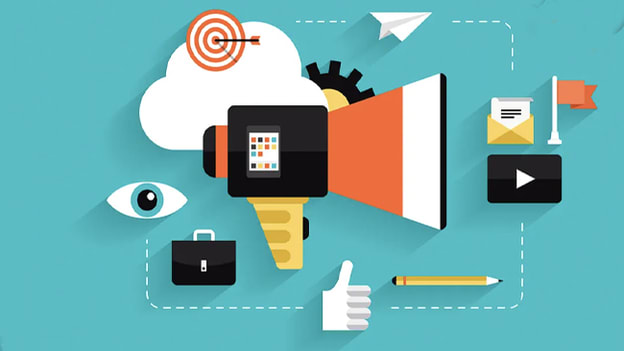Making the best use of digital tools to drive culture

Digital tools have taken over the workplace—and it's a good thing. Even before the pandemic effectively normalised flexible and remote work, many organisations had started to realise how effective today's new technologies are at driving organisational culture, improving workplace behaviours, and building upon the multiple connections between business performance and the way people work.
However, the impact of digital tools on organisational culture goes several ways. The tools—and more to the point, the hybrid working environment in which they are used—drive changes in culture, even as that culture affects adoption of the tools. Furthermore, digital tools are fundamentally quantifying tools. They monitor, gather data, and present reports. Yet workplace culture is an intangible thing, comprising hard-to-measure elements such as values, interactions, conscious or unconscious choices, and infinite tiny nuances that even today's powerful AI may not pick up on.
So how does one make the best use of digital tools to evaluate and influence workplace culture? HR leaders from several major international firms shared that it comes down to an understanding and empathetic human touch: looking not just at the insights collected by the tools, but also the stories that are told person to person.

“Automated reports only tell part of the story,” said Rajesh Ramanathan (right), Vice President and Regional People Lead for Asia Pacific, Middle East and Africa at Mondelēz International. Even though organisations can harness the power of data and technology to understand people better and cater for their individual needs and wants, he pointed out that the data is only meaningful when paired with the lived experience.
“We need to be able to match insights from data to the stories and experiences of people and turn the data into actionable insights.”
Gather insights digitally, and then gather them humanly
In today's hybrid working model with digitally-enabled collaboration, the tools available can easily collect, parse, and analyse feedback from a workforce of thousands—whether through the straightforward approach of sending out surveys, or the more convoluted method of analysing communications and interactions online.
One way for HR teams to optimise their use of tools is through customisation.

Ang Sze Pheng (right), HR Director at WWT, APJ, said that organisations can consider tailoring and personalising employee engagement surveys for each team and every employee—a completely realisable approach with today's powerful AI tools. “This way, we can generate greater and impactful insights on what’s working and what’s not working across the organisation, rather than receiving vague complaints or compliments,” she noted.
More importantly, she said, the data collection shouldn't just be left to the digital tools. There has to be some kind of follow-up, a deep dive even. “Once we’ve finished analysing the feedback, HR and business leaders can engage with employees to discuss issues and ideas on improvements,” Ang recommended.
Many HR leaders who shared their views with People Matters agreed that even as digital tools are an excellent way of tracking organisational culture and employee experience on a real-time basis, it is the in-person, human-driven follow-ups that provide the real in-depth perspectives.

Isabel Naidoo (right), Inclusion & Talent Lead at FIS, shared that the fintech and financial services firm uses a wide range of tools such as Visier, Glint and Talent Neuron to understand the state of employee experience and get some insights on how well the firm's priorities and workspace strategy are working.
“Some of these tools have a ‘listening’ function that collects real-time feedback from our colleagues. This allows us to keep our finger on the pulse of what our colleagues’ needs, preferences and concerns are,” she explained. “In addition to this data-driven approach, we also use focus groups, design thinking sessions, all-hands polls, interviews, and survey data to help us constantly listen, understand, design, respond, and listen again so that we can continually improve the workspaces and experiences that we’re bringing to life.”
Put the culture in place, then perpetuate it with tools
Accenture analysts Christie Smith and Nora Heger wrote in an article published by the World Economic Forum that a culture most suitable for today's digital world is found in organisations that “use digital tools and data-powered insights to drive decisions and customer centricity while innovating and collaborating across the organisation.”
But to achieve this, the organisation must be open to technology in the first place, and it must encourage internal collaboration with or without the technology—in other words, the culture must be in place well before the digital tools come into play.
As Lekha George, Head of People and Communities for ASEAN and Korea at Cisco, observed in a conversation with People Matters, before a business moves ahead on technology and digital tools, it must have clarity about its own objectives: “Businesses need to also be very mindful that even though the adoption of tools and systems, we remain anchored in business goals and priorities,” she said.
FIS's Isabel Naidoo shared her own team's approach as an example: they have an organisational cultural framework in place that provides direction for designing employee experiences, such that the organisational values are part of those experiences. In turn, those experiences are enabled by the tools and technology they have implemented.
“Many of the talent and, more broadly, workspace tools that we invest in as an organisation aim to foster the values, behaviours, and ways of working that our culture is anchored in,” she said.
At the same time, though, many organisations have also found that digital collaboration tools are a necessity to perpetuate their culture in the remote or hybrid working model, especially if their workforce is global and highly dispersed. Mondelēz's Rajesh Ramanathan shared this from his experience: “At Mondelēz Asia Pacific, Middle East and Africa, our employee base represents 76 nationalities across 13 time zones, working in a hybrid environment. This hybrid work environment forces greater reliance on technology and digital tools. These tools in turn help drive insights-led, coordinated Human Capital actions enabling cultural cohesion.”
In any case, organisations would have to make use of digital tools to maintain their culture even without the hybrid working model to drive digitalisation, according to Leong Chee Tung, CEO and co-founder of EngageRocket.
“Organisations need to constantly assess employee experience and culture alignment throughout the employment life cycle as misalignment is likely to affect employees’ work-related outcomes,” he advised. “Going digital in the best workplaces means more than just using video conference calls...Organisations need to measure the right indicators, those most strongly correlated with employee engagement, loyalty, and intent to stay.”
Finally, turn insights into tangible change
The best way for organisations to drive cultural change through tangible action—whether by leaders setting an example in their actions, or by implementing and enforcing policies that drive specific behaviours, or even by making changes to the physical workplace. And as HR leaders have shared, this does not change with digital tools. It is simply made more efficient.
“People Leads have always had to be stewards to drive engagement, improve employee experience and build an effective company culture,” said Mondelēz's Rajesh. “With technology and colleague insights, we are well placed to do this more accurately, impactfully and with speed.”
In other words, digital tools drive culture by streamlining the work that HR leaders and their teams would otherwise have to do; by creating a broader base upon which to build the more human part of culture development; and by allowing, at the same time, a much greater degree of precision in making decisions around how to transform the workplace.















